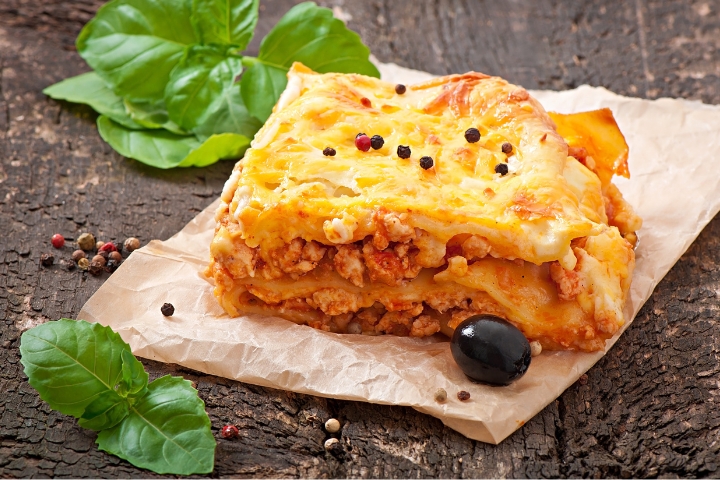Lasagna, with its layers of pasta, rich sauce, and melted cheese, is a beloved dish in many households around the world. It’s a comforting meal that can be customized with various ingredients to suit different tastes and dietary preferences. Whether you’re a seasoned chef or a beginner in the kitchen, learning how to make lasagna is a rewarding experience that will elevate your cooking skills and impress your family and friends.
The Origins of Lasagna
The history of lasagna dates back to ancient Greece and Rome, where early versions of the dish were made with flat sheets of dough called “laganon.” These sheets were cut into strips and baked with a filling of meat or vegetables, somewhat resembling the lasagna we know today. However, the dish as we recognize it began to take shape in Italy during the Middle Ages, particularly in the region of Emilia-Romagna. It was here that the traditional lasagna recipe, featuring layers of pasta, Bolognese sauce, béchamel, and Parmigiano-Reggiano cheese, was perfected. Learning how to make lasagna is not just about mastering a recipe but also connecting with a rich culinary tradition that spans centuries.
Evolution and Variations
Over time, lasagna has evolved, with countless regional and global variations emerging. In Italy, different regions have their own unique takes on the dish. For example, in Naples, lasagna is made with ricotta cheese, small meatballs, and hard-boiled eggs, while in the north, the dish often features spinach and a creamier sauce. Outside of Italy, lasagna has become a staple in many cuisines, with variations like Mexican lasagna using tortillas instead of pasta and vegetarian versions replacing meat with hearty vegetables. Understanding how to make lasagna allows you to explore these variations and even create your own, experimenting with ingredients and flavors to suit your preferences.
Ingredients To Make Lasagna
Before diving into the process of how to make lasagna, gather all your ingredients. For a classic lasagna, you’ll need:
- Lasagna noodles (pre-cooked or oven-ready)
- Ground beef or sausage (optional for a meat lasagna)
- Marinara or Bolognese sauce
- Ricotta cheese
- Mozzarella cheese
- Parmesan cheese
- Eggs
- Fresh basil and parsley
- Salt, pepper, and Italian seasoning
Preparing the Sauce
The first step in how to make lasagna is preparing a flavorful sauce. If you’re using ground beef or sausage, brown the meat in a large skillet over medium heat, breaking it up as it cooks. Once the meat is fully cooked, drain any excess fat and add your marinara or Bolognese sauce. Let the sauce simmer for about 20 minutes to allow the flavors to meld together. Season the sauce with salt, pepper, and Italian seasoning to taste. If you prefer a vegetarian lasagna, you can skip the meat and use a combination of sautéed vegetables like spinach, mushrooms, and zucchini as your filling.
Mixing the Cheese Filling
While the sauce is simmering, prepare the cheese filling. In a large bowl, combine ricotta cheese, eggs, grated Parmesan, chopped fresh parsley, and basil. Mix until the ingredients are well combined. The eggs help bind the cheese mixture, giving it a rich and creamy texture. This cheese layer is essential in creating the signature creaminess of lasagna.
Assembling the Lasagna
Once you have your sauce and cheese filling ready, it’s time to assemble the lasagna. Preheat your oven to 375°F (190°C) and grease a 9×13-inch baking dish. Begin by spreading a thin layer of sauce on the bottom of the dish. Place a layer of lasagna noodles on top of the sauce, followed by a layer of the cheese mixture, then another layer of sauce. Repeat these layers until all your ingredients are used up, finishing with a layer of sauce. Sprinkle a generous amount of shredded mozzarella and Parmesan cheese on top for a golden, bubbly finish.
How To Make Lasagna With Baking and Serving
Cover the dish with aluminum foil and bake in the preheated oven for 25 minutes. Remove the foil and bake for an additional 20-25 minutes, or until the cheese is melted and slightly browned. Let the lasagna rest for about 10-15 minutes before slicing. This allows the layers to set, making it easier to serve clean slices. Knowing how to make lasagna doesn’t just involve following a recipe; it’s about perfecting your technique and timing to achieve that ideal balance of flavors and textures.
Customizing Your Lasagna
The beauty of learning how to make lasagna is that the dish can be easily customized. Whether you prefer a vegetarian version, a gluten-free option, or even a seafood twist, the basic process remains the same. Once you’re comfortable with the traditional recipe, don’t hesitate to experiment with different ingredients and flavor combinations.





GIPHY App Key not set. Please check settings